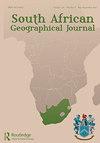意外湿地-来自勒斯滕堡Kgaswane山保护区的南部非洲案例研究
IF 1.4
4区 社会学
Q3 GEOGRAPHY
引用次数: 1
摘要
湿地是多种生境的组成部分,在生态和水文循环中发挥着重要作用,但也是最受威胁的生态系统之一。因此,了解湿地的水文,特别是湿地的水源,对确保这些系统的适当管理至关重要。土地利用活动不仅改变了集水区的径流特征,而且常常导致水道的水流状况发生改变。湿地经常在人为景观中偶然发展,这并不罕见。然而,这些湿地的文献和研究很少。在勒斯滕堡的Kgaswane山保护区,由于水基础设施泄漏,意外形成了一个湿地。该项目的目的是对湿地进行分类并确认其起源,重点关注泄漏的作用。方法包括水文地貌分类、水离子组成分析、内场温度和电导率测量。历史卫星图像被用来研究湿地随时间的演变。电导率和离子组成的结果表明,这是一个非自然的水源,为泄漏的管道导致湿地的形成提供了支持。讨论了意外湿地的管理,并展望了未来相关研究的潜力。本文章由计算机程序翻译,如有差异,请以英文原文为准。
Accidental wetlands - A southern African case study from the Kgaswane Mountain Reserve, Rustenburg
ABSTRACT Wetlands form part of a diverse range of habitats and play an important role in the ecology and hydrological cycle but are amongst the most threatened ecological systems. It is therefore critical to understand the hydrology of wetlands, and their contributing water sources in particular, to ensure appropriate management of these systems. Land use activities not only alter the runoff characteristics of catchments, but also often result in modified flow regimes in watercourses. Wetlands often develop accidentally in anthropogenic landscapes and are not uncommon. However, these wetlands are poorly documented and researched. An accidental wetland formed in the Kgaswane Mountain Reserve, Rustenburg, due to leaking water infrastructure. The aim of this project was to categorise the wetland and confirm its origin, focussing on the role of the leakage. Methods included hydrogeomorphic classification, water ion composition analysis, as well as infield temperature and electrical conductivity measurements. Historical satellite imagery was used to study the evolution of the wetland over time. The electrical conductivity and ionic composition results suggest an unnatural water source, providing support that a leaking pipe caused the wetland to form. Management of accidental wetlands is discussed and the potential for future, related research is contemplated.
求助全文
通过发布文献求助,成功后即可免费获取论文全文。
去求助
来源期刊

South African Geographical Journal
GEOGRAPHY-
CiteScore
3.40
自引率
7.10%
发文量
25
期刊介绍:
The South African Geographical Journal was founded in 1917 and is the flagship journal of the Society of South African Geographers. The journal aims at using southern Africa as a region from, and through, which to communicate geographic knowledge and to engage with issues and themes relevant to the discipline. The journal is a forum for papers of a high academic quality and welcomes papers dealing with philosophical and methodological issues and topics of an international scope that are significant for the region and the African continent, including: Climate change Environmental studies Development Governance and policy Physical and urban Geography Human Geography Sustainability Tourism GIS and remote sensing
 求助内容:
求助内容: 应助结果提醒方式:
应助结果提醒方式:


